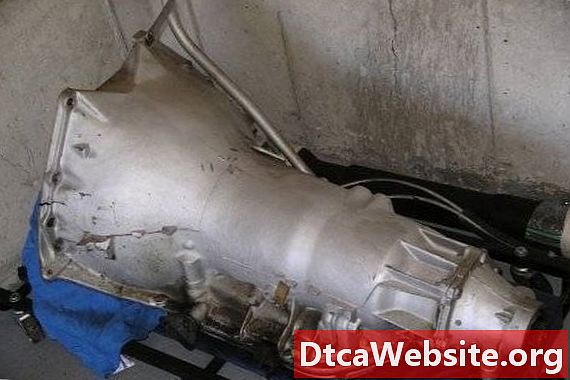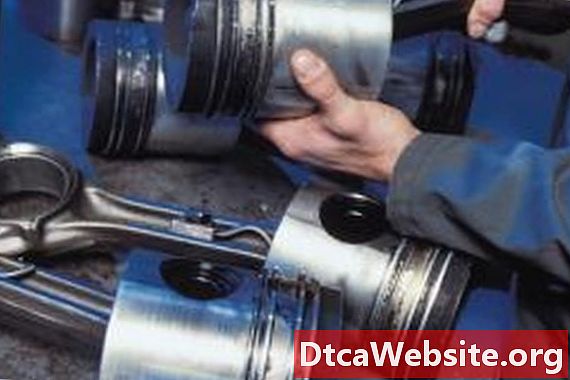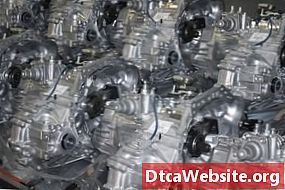
Contenu

Although design and mounting details may vary from one vehicle model to another, automatic transmissions come with main components mounted on a common structural design for safe and proper operation. Making notes on parts and location related to your specific model and following this guide will help you remove the transmission from your vehicle.
Step 1
Park your car in a safe place with a level surface; raise the front of your vehicle and safely support it on two jack stands.
Step 2
Make an alignment mark on the end of the drive shaft at the rear-the shaft between the transmission and differential; make a similar mark on the rear yoke that attaches to the end of the drive shaft and the differential; and another mark on the differential flange attaching to the rear yoke. Use a scratch awl or a similar tool to mark the components. These marks will help you assemble and keep the drive shaft balanced after the re-installation process. If you need more elbow room, raise the rear of the vehicle as well, and support it on two jack stands.
Step 3
Remove the rear yoke to the differential bolts and pry the drive shaft forward using a pry bar. Support the rear of the drive shaft on a block to keep it in as horizontal a position as possible and prevent damage to the front universal joint; if necessary, wrap masking tape around the two caps on the rear yoke to keep them from falling off. If the drive shaft has a middle support bracket, remove it now.
Step 4
Place a drain pan under the rear of the transmission; then slide the drive shaft off the transmission and set it aside. Plug the rear of the transmission with plastic bags or shop rags to keep transmission oil from leaking.
Step 5
Unplug the automatic transmission modulator vacuum line; remove the transmission oil filler tube, speedometer cable, and wires connected between the transmission and the vehicle. Use a tube wrench to disconnect the cooler line from the transmission to avoid damage to the line.
Step 6
Remove the rear transmission mount, exhaust tube and any other components that may interfere with transmission removal. Make a note of components location as necessary, and keep bolts and screws with their original components.
Step 7
Remove the bell housing to engine block bolts using a wrench and ratchet and socket; keep note of each bolt location since these bolts differ in size. Then, remove the cover between the transmission and engine to gain access to the torque converter.
Step 8
Remove the mounting torque converter bolts using a ratchet, extension and socket. You will have to turn the converter using a pry bar to access all the bolts around the converter.
Step 9
Position a transmission jack under the transmission oil pan; raise the jack enough to take the weight off the cross member supporting and holding the transmission onto the vehicle frame; tie the transmission to the jack with the jack clamps and remove the cross member using a ratchet and socket.
Pull the transmission off the engine, lower the jack and remove the transmission away from the vehicle.
Tip
- You may rent a transmission jack from most auto parts stores if you do not have one available.
Items you will need
- Floor jack
- 2 Jack stands
- Scratch awl
- Wrench set
- Ratchet and socket set
- Pry bar
- Masking tape
- Drain pan
- Plastic bags or shop rags
- Tube wrench
- Transmission jack


